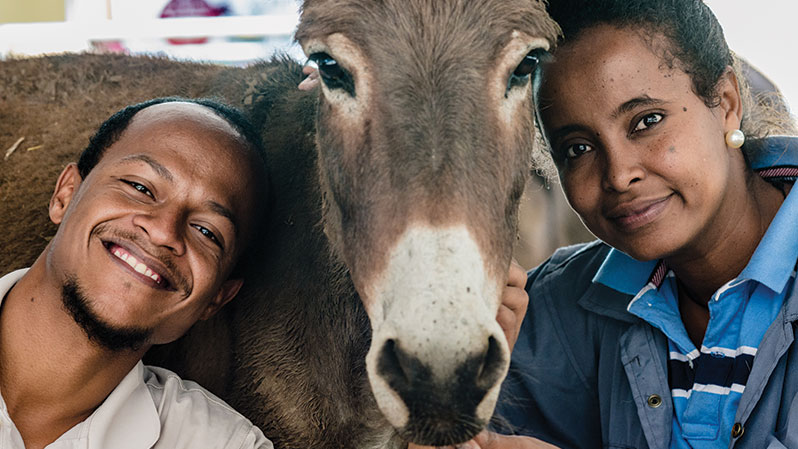Similar to language that denigrates, devalues, and misrepresents certain human beings on the basis of race, gender, or sexual orientation, speciesist language is also a form of “self aggrandizing prejudice” that “promotes a false dichotomy between humans and nonhumans” and emphasizes a privileging of humans as separate from and superior to the animal kingdom, tacitly justifying humans’ entitlement to use others as a resource.[3] To address bias in language, journalists and editors should:
- Be clear who is included in the term “animal.” Use more precise terms such as nonhuman animals, animals excluding humans, or other than human animals (at least upon first use, clarifying that the word “animal” from here on out will be used to designate nonhumans in the rest of the article). This is not only more accurate but also more inclusive in acknowledging humans as members of the animal kingdom. Another way to rhetorically exclude humans when talking about other animals is for journalists to simply list the type of animal category more precisely: for example, farmed animals, companion animals, wildlife or free-roaming animals, nonhuman primates, reptiles, birds, insects, aquatic animals, and endangered species.
- Accurately describe animals by gender (e.g. he or she, him or her) rather than saying “it” (a pronoun most befitting an inanimate object). “It” can be used to describe an entire species category but not an individual. When gender is unknown, use the plural term “they” or “theirs” or perhaps “he or she.” For androgynous species, “they” or “theirs” is preferable to “it.” Similarly, journalists should use “who” instead of “that,” and “someone” or “somebody” instead of “something.” This language recognizes animals as sentient, animated beings.
- Strive for neutrality. Avoid primarily using industry terms (especially euphemisms) to describe and define animals; instead, use given species names or refer to them as someone who is used by an industry, as that industry use does not define them and is something that is done to them, often against their will. This shows a respect similar to choosing to say someone is enslaved rather than calling them a slave, or saying someone is a person with a disability rather than calling them a disabled person (See chart for examples).[4]
| INSTEAD OF THESE TERMS: | USE THESE MORE PRECISE AND NEUTRAL TERMS: |
|---|---|
| it, that, which or something | he, she, they, who, whom, someone or somebody |
| pets | companion animals, nonhuman family members |
| OBJECTIFYING INDUSTRY TERMS: | ANIMATED SPECIES NAMES: |
| livestock | cows, sheep, pigs, donkeys, etc. |
| poultry | chickens, turkeys, geese, etc. |
| pork | pigs |
| veal | calves |
| seafood | fishes, salmon, shrimp, etc. |
| game | deer, rabbits, foxes, etc. |
| PASSIVE TERMS THAT CONCEAL HUMAN CONTROL: | ACTIVE TERMS THAT REVEAL HUMAN CONTROL: |
| farm animals | farmed animals, animals raised for food |
| dairy cows | cows used for their milk/dairy |
| beef cattle | cows and bulls killed for beef/meat/flesh |
| lab rat | rats used as research subjects |
| circus elephant | elephants kept in circuses; elephants trained to perform for humans |

